Monetizing your video content can feel overwhelming—especially when you’re not sure which model is best or how to get started.
Subscription Video on Demand (SVOD) could be the answer you’re looking for.
It’s a proven business model for creators to build a reliable income while providing real, consistent value to your audience.
In this article, we’ll dive into what makes SVOD such a great fit for creators like you, and how you can use it to grow your business.
What is SVOD?
SVOD, or Subscription Video on Demand, is a monetization model where users pay a recurring fee, typically monthly or annually, for unlimited access to a library of content like films, TV shows, and more.
SVOD provides ongoing access to content as long as the subscription is active.
For viewers, this means continuous access to their favorite content. And for you, as a creator, it guarantees consistent engagement and steady revenue.
How SVOD works
SVOD services are dominating the streaming industry. You’re already using an SVOD platform if you like to binge TV shows on Netflix or Hulu. Once you subscribe to a service, you have unlimited access to the platform’s content library.
While most SVOD platforms are ad-free, some include ads on lower-tier pricing packages.
They typically feature a mix of original productions and licensed content, giving subscribers a wide variety of exclusive and popular content to choose from.
Today, creators can launch their own SVOD service and sell videos online with platforms like Uscreen.
Popular SVOD platforms
You’re probably already familiar with the big names in SVOD. Popular platforms include:
- Netflix
- Amazon Prime Video
- Disney+
- Hulu
- HBO Max
The demand for streaming services is growing rapidly. Some 83% of US consumers use a subscription video-on-demand service, and the market generates over $30 billion per year.
And SVOD isn’t just for major platforms. With video monetization platforms like Uscreen, smaller creators can easily boost SVOD revenue with an OTT platform and grow their video business.
SVOD vs. TVOD vs. AVOD: What’s the difference?
Before we dive into a comparison, let’s go over the basics.
VOD (video-on-demand) refers to libraries of pre-recorded video content that viewers can access whenever they want. Whether they prefer binge-watching an entire series or streaming on their own schedule, VOD platforms give viewers full control over playback – enabling them to pause, rewind, and fast-forward at their convenience.
There are three primary VOD models: SVOD, TVOD, and AVOD. The core difference between these models is how they generate revenue.
While SVOD generates recurring revenue through subscriptions, TVOD allows users to pay for content on a per-view basis, and AVOD offers free content supported by ad revenue.
Since we’ve already explained SVOD and how it works, let’s take a closer look at the other two models: TVOD and AVOD.
What is TVOD?
TVOD, or transactional video-on-demand, is based on a pay-per-view system, where viewers can purchase content they choose to watch on a one-time basis.
Unlike SVOD, where subscribers access an entire catalog, TVOD charges per video or video package. Users browse a catalog, rent a video for limited-time access, or purchase it for permanent access.
For example, platforms like Apple iTunes or Google Play use TVOD, where users can rent or buy movies or shows.
TVOD is also used by independent creators. Magic Stream, a brand that uses Uscreen, lets viewers buy one video or sign up for a membership on the same checkout page.
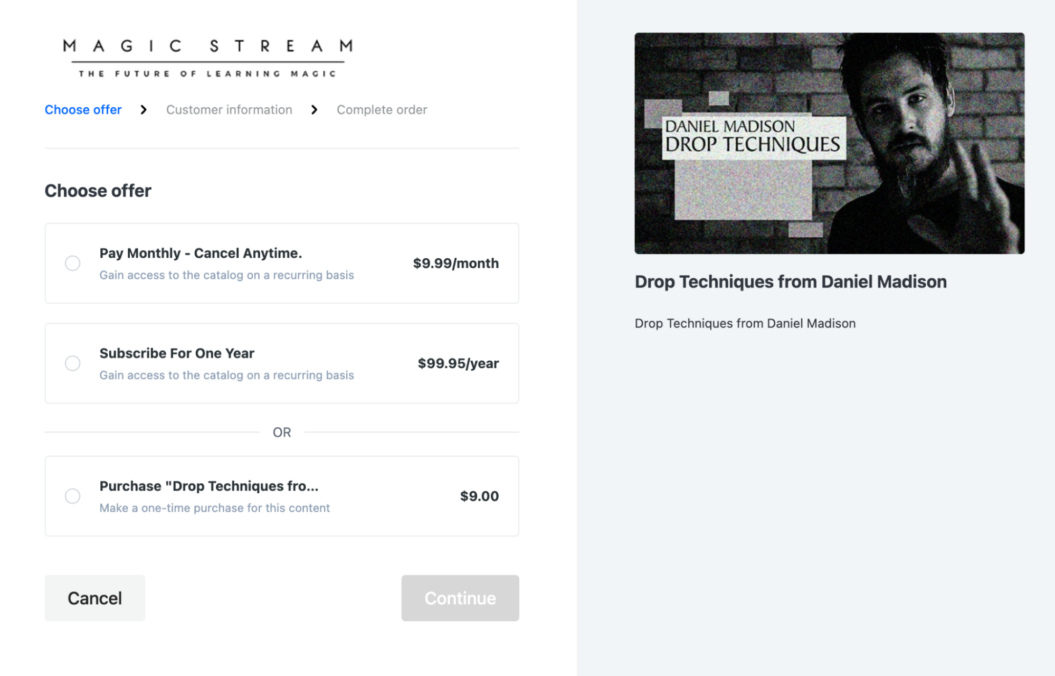
TVOD is great for exclusive or event-based content but it doesn’t guarantee consistent, ongoing engagement like SVOD.
What is AVOD?
AVOD, or advertising video-on-demand, is another popular way to monetize video. It’s free for viewers, but there’s a catch: they watch ads in exchange for it.
Ads are typically between 15 and 30 seconds, and can run before, during, or after a video.
You’re likely familiar with this model if you’ve used YouTube. Free content is readily available because ad revenue covers production and hosting costs.
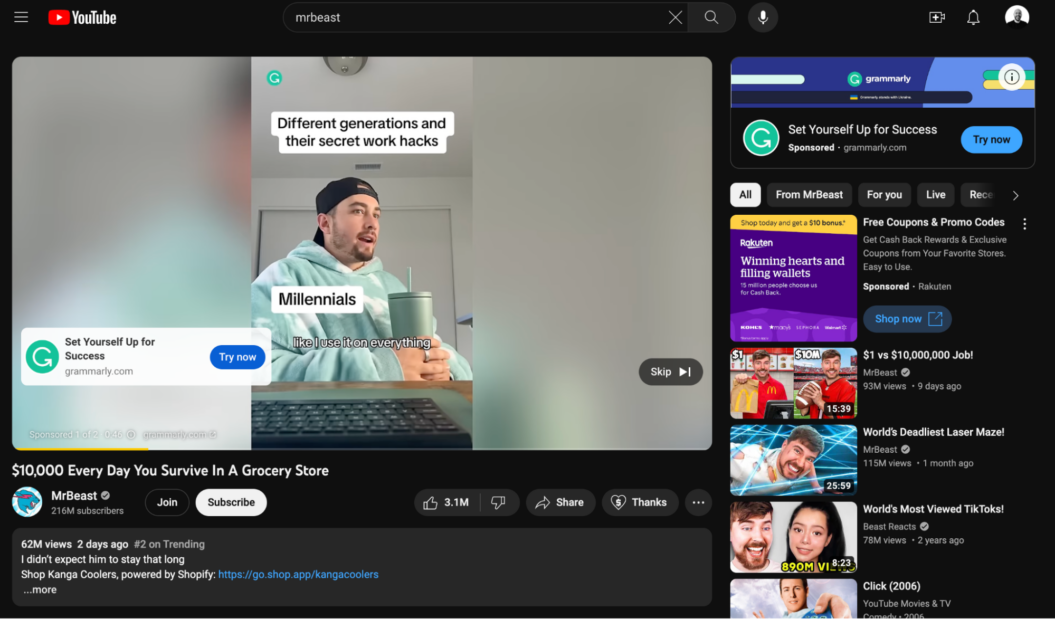
Beyond YouTube, AVOD is now the backbone of many streaming platforms that host a variety of free on-demand content.
But the downside for creators is that ad revenue can be unpredictable, varying greatly depending on the performance of the ads.
That said, you might be wondering whether Netflix is AVOD or SVOD. Netflix primarily uses the SVOD model but has recently introduced an ad-supported tier, making it a hybrid of both.
Quick comparison: SVOD, TVOD, AVOD
Now that you know how all these models work, let’s quickly look at how they compare:
| Model | Payments | Customer experience | Revenue |
|---|---|---|---|
| SVOD | Subscription fees | Convenient, no-ads | High |
| TVOD | One-time purchases | Pay only for desired content | Mid-range |
| AVOD | Ad revenue | Free access with ad interruptions | Low |
And while we’re at it, here are some examples of well-known platforms that use each model:
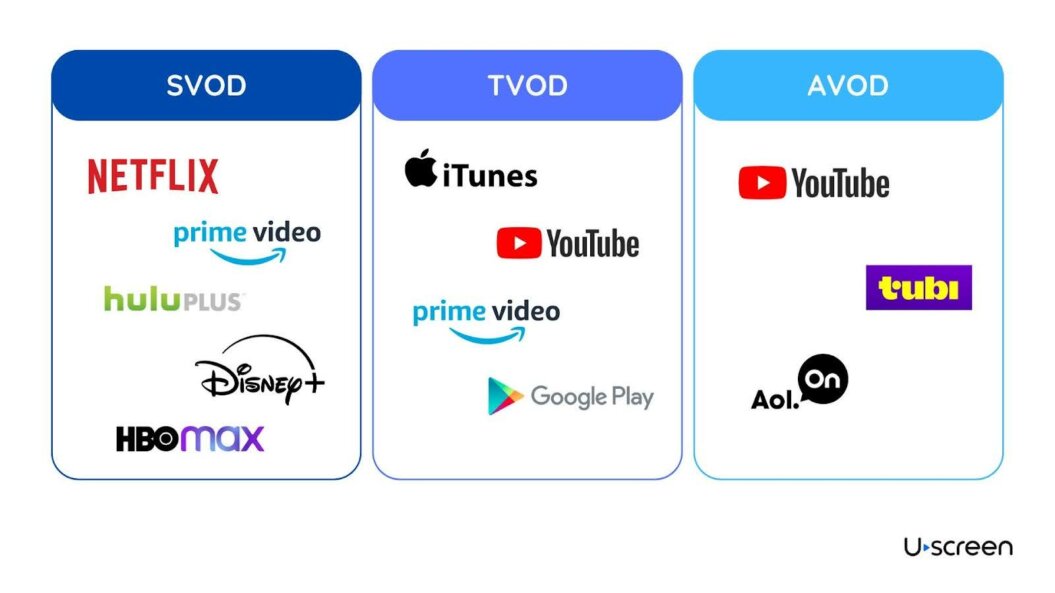
While all three models, SVOD, TVOD, and AVOD, offer benefits, SVOD is often the most attractive for content creators due to its ability to provide consistent, scalable revenue.
SVOD vs. OTT: What’s the difference?
It’s easy to confuse SVOD and OTT, as they work together but serve different purposes.
SVOD is the monetization model that lets you earn recurring revenue through subscriptions, while OTT (Over-the-Top) is the technology that delivers this content directly to your viewers over the internet.
Think of OTT as the system that gets content to your devices—whether it’s a smart TV, phone, or tablet—while SVOD is how creators monetize that content.
Platforms like Netflix, YouTube, and Disney+ are excellent examples of OTT platforms that use SVOD for revenue generation.
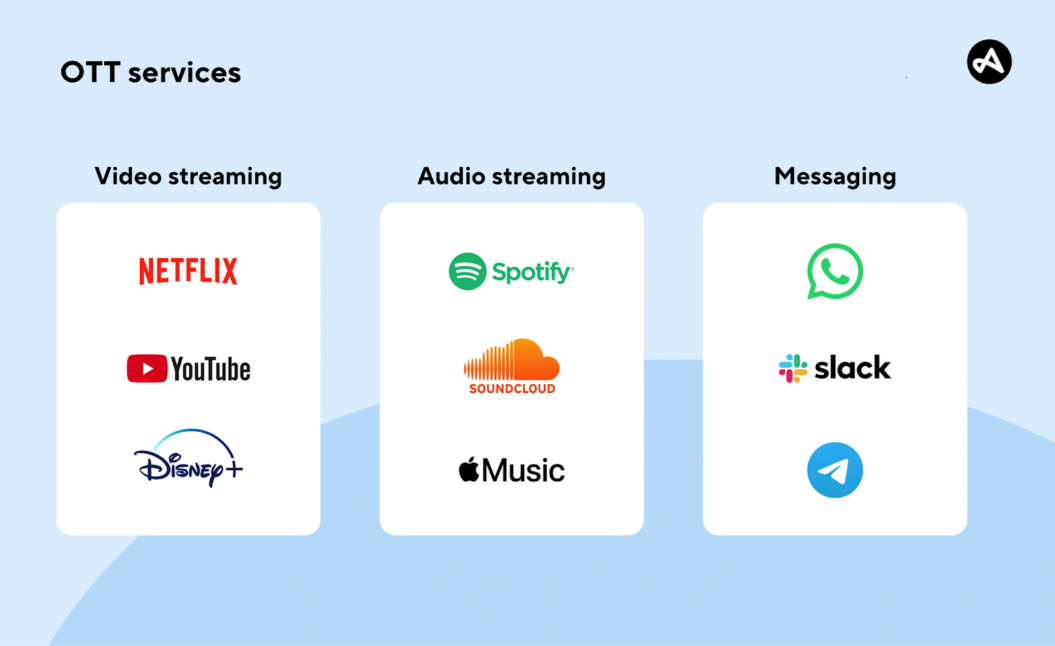
OTT allows these platforms to reach users across multiple devices, providing a seamless experience no matter how or where viewers choose to watch.
With Uscreen, you can leverage both OTT technology and SVOD monetization to build scalable, profitable streaming platforms. Launching Mobile and TV Apps can help creators reach a wider audience and monetize effectively.
For example, M/Body generates $40K in monthly revenue, with 62% of members accessing content through their app.
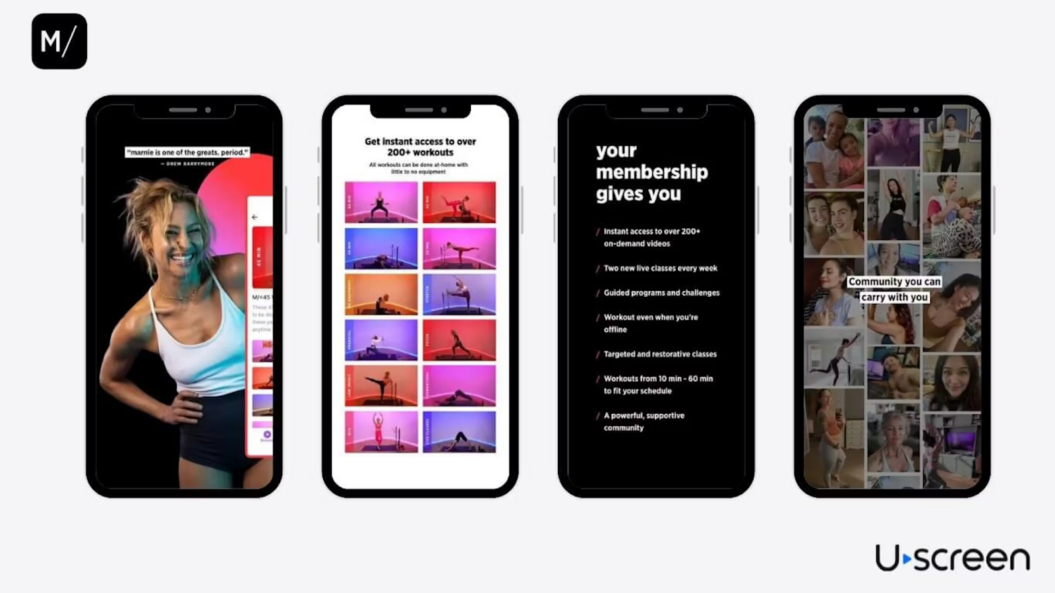
Later on in this article, you’ll find a dedicated section on how using mobile and TV apps can help grow your SVOD service.
Why is SVOD such a popular option with video creators?
For viewers, it’s pretty simple: flexibility and value.
Viewers like to watch whatever they want, whenever they want, at no extra cost.
That’s why SVOD is so popular. It offers on-demand flexibility, allowing viewers to enjoy content on their own schedule without being tied to a broadcast.
Many SVOD platforms also offer an ad-free experience, making streaming a seamless and uninterrupted experience.
Plus, of course, it’s more bang for their buck. Paying once a month for an unlimited library of content is often far more appealing than paying per view or dealing with ads.
For content creators, SVOD offers a world of benefits for growing your video business. You can:
- Have a reliable income since viewers pay a recurring fee.
- Reach a broad audience by meeting different viewing preferences.
- Offer subscribers direct access to exclusive content.
- Have full creative freedom since you distribute your own content.
- Build a community around your brand.
Have a reliable income
One of the biggest advantages of SVOD is its ability to provide a predictable and recurring income.
With a subscription fee model, you don’t have to rely on fluctuating ad revenue or one-time purchases. Instead, subscribers pay a consistent fee, typically monthly or annually, ensuring a steady cash flow for you.
This recurring income allows you to plan ahead, cover production costs, and invest in growing your platform.
Rather than guessing how much you’ll earn each month, you can depend on stable revenue and have the freedom to focus on creating content that engages your audience.
Reach a broad audience
The SVOD model lets you meet the needs of a diverse audience by offering unlimited access to a wide variety of content.
Whether subscribers are looking for quick tutorials, live streams, or long-form series, they can find exactly what they want at any time.
This on-demand flexibility encourages longer viewer engagement and higher retention.
Plus, OTT platforms allow you to extend their SVOD service to users on multiple devices, from mobile apps to smart TVs, ensuring seamless access across all platforms.
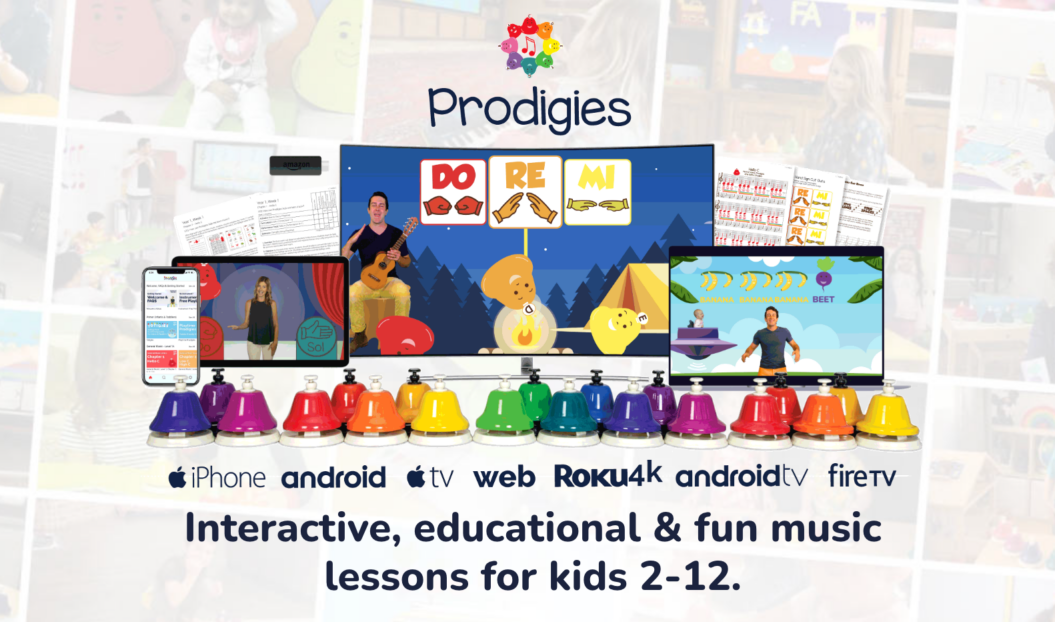
This broad accessibility helps attract new subscribers and expand your reach to a wider audience.
Offer subscribers direct access to exclusive content
With SVOD, you have the perfect opportunity to offer exclusive content that subscribers can’t find anywhere else.
Whether it’s early access to new releases, live streams, or tailored content, these perks make your platform stand out.
For example, NextUp Comedy subscribers can watch their favorite comedy shows live, from the comfort of their homes (or anywhere, really).
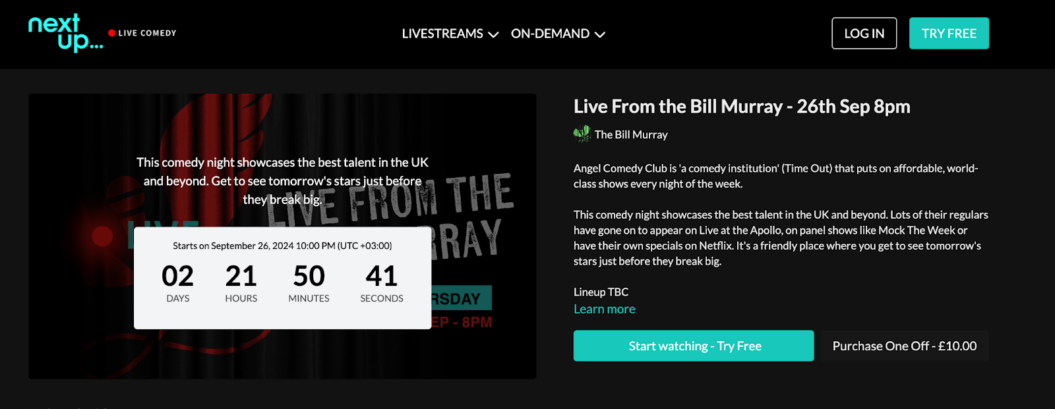
When subscribers get access to special content, they feel like they’re part of a unique community.
This connection helps build loyalty, which helps you reduce churn and keep your subscribers engaged.
Have full creative control
Unlike ad-supported platforms, SVOD gives creators the ability to maintain full creative control over their content.
This means they can create the content they’re passionate about without needing to cater to advertisers or worry about ad placement.
This freedom allows creators to explore niche topics and connect with their audience on a deeper level, all while maintaining ownership of their platform and content.
Creators can build a unique brand around their work, offering a personalized experience that resonates with their subscribers.
Build a loyal community around your brand
SVOD helps creators build a loyal community.
Subscribers become invested in your content and often develop a sense of belonging to a tight-knit community.
With tools like live streaming, interactive challenges, and community-driven events, you can connect with your audience in meaningful ways.
This sense of community fosters long-term loyalty, keeping subscribers engaged and encouraging word-of-mouth growth.
How to launch your own SVOD service
Launching a successful SVOD service is no longer exclusive to major platforms like Netflix or Amazon Prime Video.
Independent creators and small business owners are now thriving by using the SVOD model to grow their audience and generate sustainable income.
For example, Big Picture Skiing grew their business by launching an SVOD platform focused on niche skiing content. They now generate over $30,000 in monthly revenue with 1,100+ active members.
And Prodigies Music Lessons doubled their viewer growth in just three months by leveraging branded apps, attracting 7,000+ paid subscribers and generating $40,000+ in monthly revenue.
Just like these creators, you can start your own successful SVOD service too. Here are some tips to get you started:
1. Choose the right platform
The first step in launching your SVOD service is choosing a platform that aligns with your business goals.
Platforms like Uscreen provide all the tools you need for a customizable SVOD service, from branded mobile apps to membership management and flexible monetization options.
Uscreen has already helped over 4,000 creators launch their services, reaching 9.2 million users globally.
Other options like Vimeo OTT (Vimeo Streaming) and Zype are also available, but the key is to choose a platform that scales as your business grows.
2. Build and organize your content library
Okay, you’ve chosen the right platform to run your SVOD service. Now what?
A well-organized content library is key to subscriber satisfaction.
Categorize your content in ways that make it easy to navigate and enjoyable for your subscribers, with sections like “New Releases,” “Most Popular,” and “Exclusive Content.”
Use categories that align well with your audience’s needs and preferences, so it’s easier for them to find exactly what they’re looking for.
Take a look at this example from Big Picture Skiing:
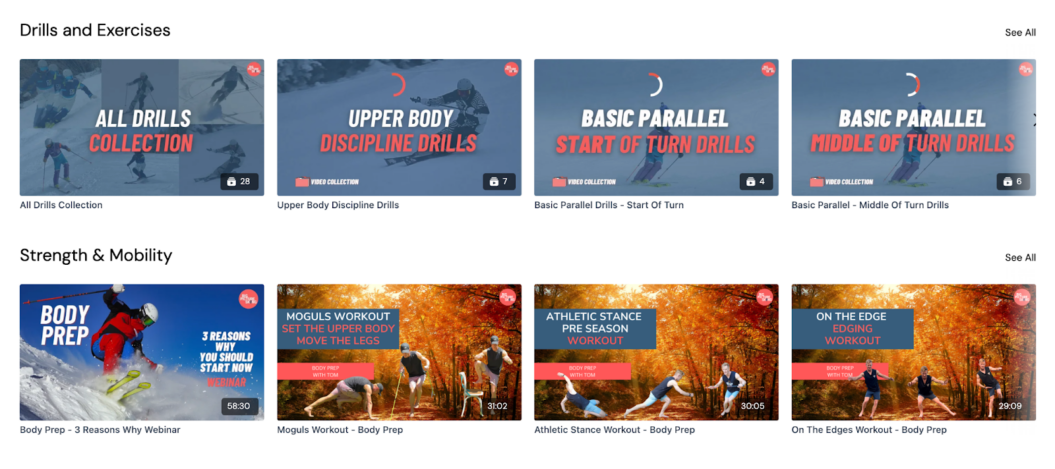
3. Set your pricing model
Most creators start with simple subscription plans, offering both monthly and annual options, while some also incorporate tiered pricing to unlock exclusive perks or early content access.
Your pricing strategy may evolve as your audience grows, but starting with straightforward options will make things easier for both you and your subscribers.
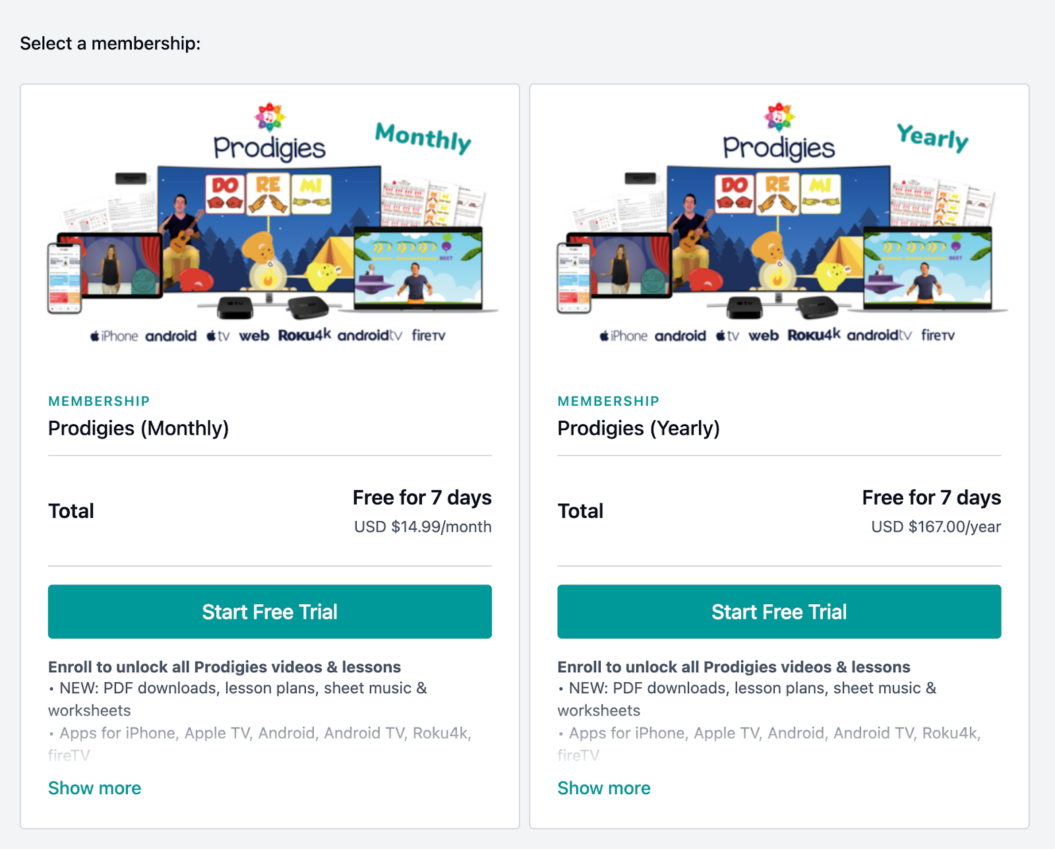
We know pricing can be a tricky one, and we’ve got you covered. The next section is all about helping you nail down the perfect pricing strategy for your SVOD service.
4. Build your brand
A strong brand is the foundation of your SVOD success.
To build a brand that resonates, you need to know your niche and your audience inside and out. Understand what sets you apart and lean into that—whether it’s the quality of your content, your unique voice, or the specific problems you’re solving for your audience.
Start by clearly defining your brand identity. What is your core message? What are your values? What should viewers think and feel when they engage with your content?
Once you’ve got this clarity, consistently apply it across all touchpoints—your platform, your social media presence, and your interactions with your community.
Customize your OTT platforms to reflect your brand’s tone and aesthetic.

Remember: branded apps can play a role in strengthening your brand, but they’re not the brand itself.
It’s your content, community, and how you show up consistently that truly define your brand.
5. Engage your audience and market your platform
The membership economy is all about building lasting relationships with your audience.
When you create value beyond just videos, you foster a sense of belonging that keeps your viewers coming back for more.
Engage your subscribers through live Q&A sessions, exclusive content, or special perks to keep them invested in your content.
Don’t forget to actively market your platform through social media, email campaigns, and SEO to drive traffic and convert potential subscribers.
Promotions, free trials, or exclusive live events can help build momentum and grow your audience over time.
How to price your subscription video on demand service
It’s hard to price video content as a subscription because it goes against the way we’ve always priced products. By adding all your direct material, labor and overhead costs to a product or service, you can reach the perfect price for the product or service.
But, because the business models are so different, pricing an SVOD service is a bit more complicated.
A monthly VOD subscription costs on average between $7.99 and $9.99 per month, but every business is different, that’s why you want to think this over to make sure this price is right for both your business and your customers.
Our team has studied our customers’ pricing and developed an easy formula to give you a starting point. Use the calculator and tutorial below to figure out your pricing.
0
$0
1. Add up your existing follower count
How big is your current audience? How many followers do you have on social media? How many emails do you have on your list? For this formula, either use the total number of followers from each individual platform, or the main platform you’re active on.
Your existing audience, the ones you’re currently not monetizing, is the main pond you’re going to try to fish in. They’re your biggest supporters, the ones who already know your credibility in your field.
2. Find your average conversion rates
Conversion rates are the percentage of people who will arrive at your website and buy into whatever it is you’re selling. These rates differ from business to business, content type to content type, even social media platform to social media platform.
But to make it simple for our purposes, let’s consider the average range of 2-5% conversion. Use the scale in the calculator to pick the conversion rate you want to pretend you’re at.
Word of advice: if this is your first time monetizing your followers, aim low in the pricing formula (then pick 5% just to see what that would be like to be a baller!).
Set the elements of your equation and put it in the calculator. Play around with the numbers until everything makes sense.
But wait, you’re not done yet.
Keep in mind – this formula is just somewhere to get you started. We’ve found that our most successful customers offer monthly subscription prices anywhere from $2 to $50 – that’s a pretty wide window!
There are so many different factors that place these subscriptions where they’re at right now – more than a calculator can tell you. Luckily, we know what these factors are.
3. Figure out your number of paying VOD subscribers
This variable is simply the number of subscribers you would have based on the assumed conversion rate percentage of the existing followers you have.
Whatever our magic pricing calculator yields, take it and apply the following factors to it to see if your price should be higher, lower or exactly what the calculator tells you.
💡 Remember: Just because you charge less for your content, doesn’t mean you’ll make less. Some premium content is valued at a higher price per person but attracts the attention of a few. Other content is valued at much lower but is relevant to a broader audience.
All you need to do is find the perfect middle ground that suits your content type and audience, and that will get you to your revenue goal.
4. Do market research
The nature of your content will really impact how you price your content.
The best place to start here is doing your basic market research to see what competing streaming services charge their customers. If you’re going to charge higher than your biggest direct competitor, you have to be sure your service is well worth the difference and that the added value is reflected in your brand.
The next thing to take into consideration is your content’s type and genre. From what we’ve seen, each type of content has an industry price average that you should consider and possibly abide by unless you offer content that’s very obviously more valuable and worth the difference in cost:
- Entertainment: Usually runs the lowest between $4.99 and $6.99 per month. You’re up against big giants in the streaming landscape, like Netflix and Hulu, which release new and popular entertainment regularly. But you can still offer content they don’t to compete with them at low prices.
- Health and fitness: Fitness instructors can charge viewers for their streaming content anywhere between $9.99 and $14.99 comfortably.
- Instructional, informational, and inspirational content: Think outside of fitness, like dancing or art classes. These subscriptions can range from $9.99 to $50 per month. The more niche the content, the higher you can charge.
The above numbers are just rough estimates based on what we’ve seen. If you want more accurate pricing data, it’s a good idea to ask your audience what they’d be willing to pay for your service.
Design a simple survey and include questions about budget, services they value most, and what they pay for similar services. You could even run an anonymous poll on social media to gather the same information.
If you have a group of loyal followers, you could message them or meet them on Zoom to ask for their input. It’d be a great way to make them feel valued and part of your process.
Once you have gathered the data, analyze it to find a price point that most of your followers are comfortable with and aligns with the value of your service.
5. Choose your pricing model
There are a few revenue models to choose from when pricing your SVOD streaming service. Our customers have experimented with all of them and eventually stuck to 1 of 3 of the following:
1. Paywalled (with a free trial)
A free trial gives viewers access to your entire video library for free for a limited time (typically 14-30 days). Most users who try your VOD will sign up once they see how great it is.
Our research shows that this is the most lucrative pricing model among all types of subscription businesses. According to our analysis of Uscreen creators, 52% convert into paying monthly subscribers after a free trial so they can watch as much content as they like.
In addition, creators that offer free trials make on average 195% more a month than those that don’t.
2. Freemium
Freemium is a basic, stripped-down version of your VOD that users can access for free. It usually drives large numbers of users, but conversion rates tend to be lower than the free trial strategy–around 3 to 5%.
Freemium, however, requires you to constantly highlight the value of premium products and make sure the user knows about them to convince them to upgrade.
3. The varied access model
The varied access model is the least used in VOD. It provides different levels of content access for subscribers based on their plan.
This could be applied in any way you want – offer a particular number of views or downloads each month, access to a particular number of books or television episodes, or limit the data associated with a user based on their subscription plan.
👉 NOTE: Pricing your video content will always be a work-in-progress. We really don’t think you’ll ever be “done” with it. The market will constantly change and as your business grows, so will your audience and content.
Be flexible and always test your pricing and marketing. You’ll get to know your customers more and more as time goes by, and you’ll know their content consumption and spending habits like the back of your hand.
Using mobile and TV apps to grow your SVOD platform
Uscreen creators who offer mobile and TV apps see real, measurable results.
We’re talking a 15% increase in retention and 1.6x higher customer lifetime value as more members switch to annual subscriptions.
Simply put, subscribers stick around longer, giving you more predictable income streams.
This is because apps also make it easier for your audience to access your content on their terms—whenever, wherever. With features like push notifications and offline viewing, you’re offering a more engaging experience, which makes subscribers more likely to stay subscribed.
And the stats back it up: Users who watch via apps spend 25% more time with your content compared to those who stick to web platforms.
For example, In the Lab+ doubled its viewership in a year, with 79% of views coming from mobile apps.
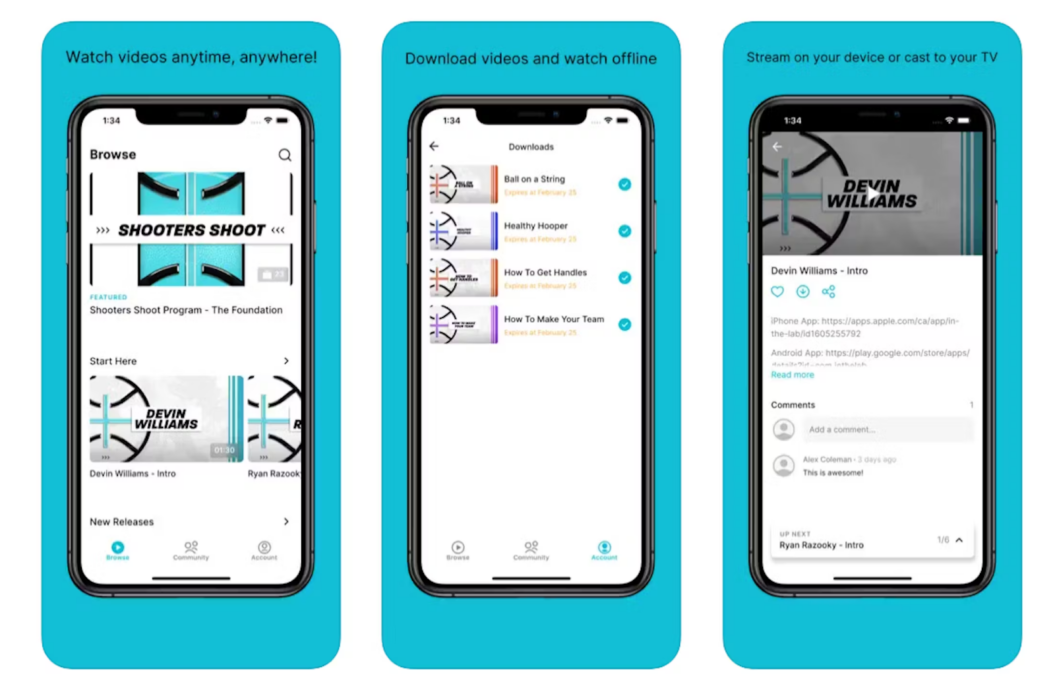
Creators like Urbanflix expanded their reach and kept subscribers engaged with a seamless experience across devices. Features like offline viewing meant that viewers can enjoy content anywhere, anytime, even without internet access, which helps drive subscriber growth.
There are plenty of cases that show the role of mobile and TV apps in growing your SVOD services. Creators like Abundance+ and Studio Bloom, who launched six mobile and TV apps, grew to over 5,000 paying subscribers, and now earn over $1M in annual revenue.
And guess what? 76% of their member watch time comes from apps, showing just how powerful apps can be in keeping viewers engaged and loyal to your platform.
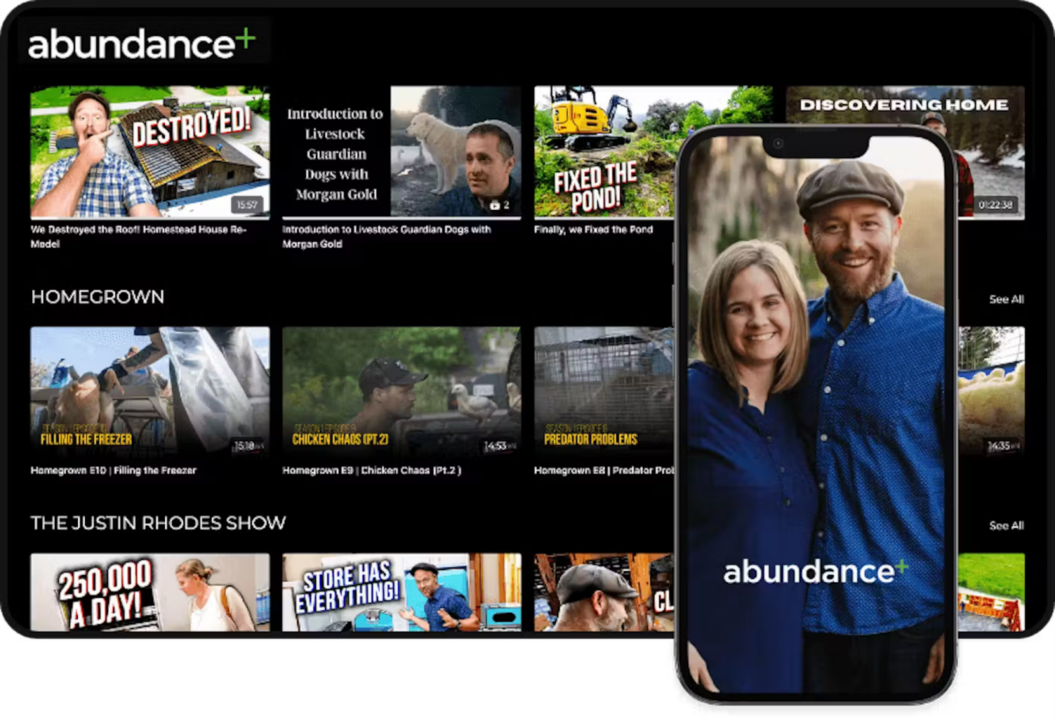
In short, mobile and TV apps not only expand your reach but also boost retention and engagement, leading to long-term revenue growth.
And with Uscreen, launching branded apps is easier than you think—no heavy upfront investment, just powerful tools to help you grow.
Overcoming common SVOD challenges
We can’t pretend that SVOD doesn’t come with its own set of hurdles.
Even though audiences pay a recurring fee, these subscribers have the flexibility to cancel at any time, which means you have to work a bit harder to keep them around. For creators, you have to keep releasing new content to keep them interested.
The good news is that these challenges can be overcome with the right strategies and tools.
Let’s take a closer look at what you might face and how to handle it.
1. Content production demands
To keep your audience engaged, you need to consistently release fresh content, and meeting this demand can feel like a lot of pressure.
Using tools like live streaming and content scheduling can ease that burden by helping you engage in real time while planning ahead. With a consistent release schedule, creators can maintain engagement without burning out.
2. Churn risk
One of the downsides of SVOD is that subscribers can cancel anytime. Building a strong community and fostering loyalty are your best defenses against churn.
Tools like live Q&As, members-only events, and direct engagement features help keep your audience connected and invested, lowering the risk of cancellations. A tight-knit membership community will last longer because they’re not just consuming content—they’re part of something bigger.
3. Investment in higher-quality content
Delivering high-quality content requires a bigger upfront investment, but data-driven tools can help you focus on what your audience truly values.
Membership tools like analytics give you insights into your viewers’ behavior, helping you refine your content strategy to focus on what resonates most. This way, you can ensure your resources are spent wisely, delivering maximum value and minimizing wasted effort.
By leveraging tools like live streaming, analytics, and community-building features, you turn these challenges into strengths, growing your SVOD platform sustainably over time.
Request a demo to launch your SVOD platform
Launching your own SVOD platform with Uscreen is easier than you think.
It’s time to take the first step toward creating a profitable streaming platform.
Get started today by requesting a demo and see how simple it is to build and manage your own subscription-based service.
With Uscreen’s comprehensive support and user-friendly platform, you’ll have the tools to launch, scale, and succeed—whether you’re an independent creator or small business owner.
Request a demo now and join over 4,000 creators who are already reaching millions of subscribers with Uscreen.
FAQ: SVOD
SVOD stands for Subscription Video on Demand, where users pay a recurring fee for unlimited access to a library of video content.
Netflix operates primarily as an SVOD service but has introduced an ad-supported tier, blending elements of AVOD.
SVOD charges users a subscription fee for content, while AVOD offers free access supported by ads.
Amazon Prime Video is an SVOD service, but it also offers TVOD options for certain content.
OTT refers to the technology delivering content over the internet, while AVOD is a monetization model where content is supported by ads.







